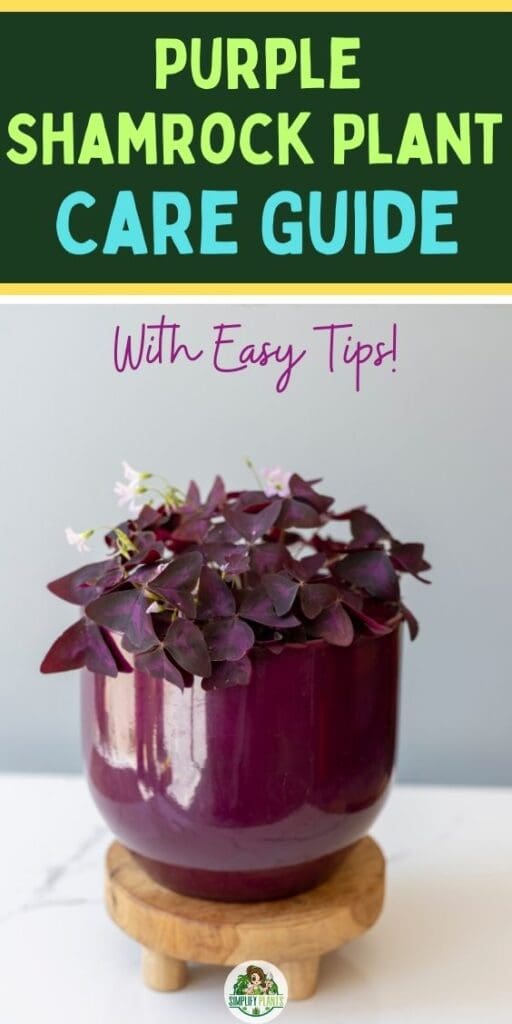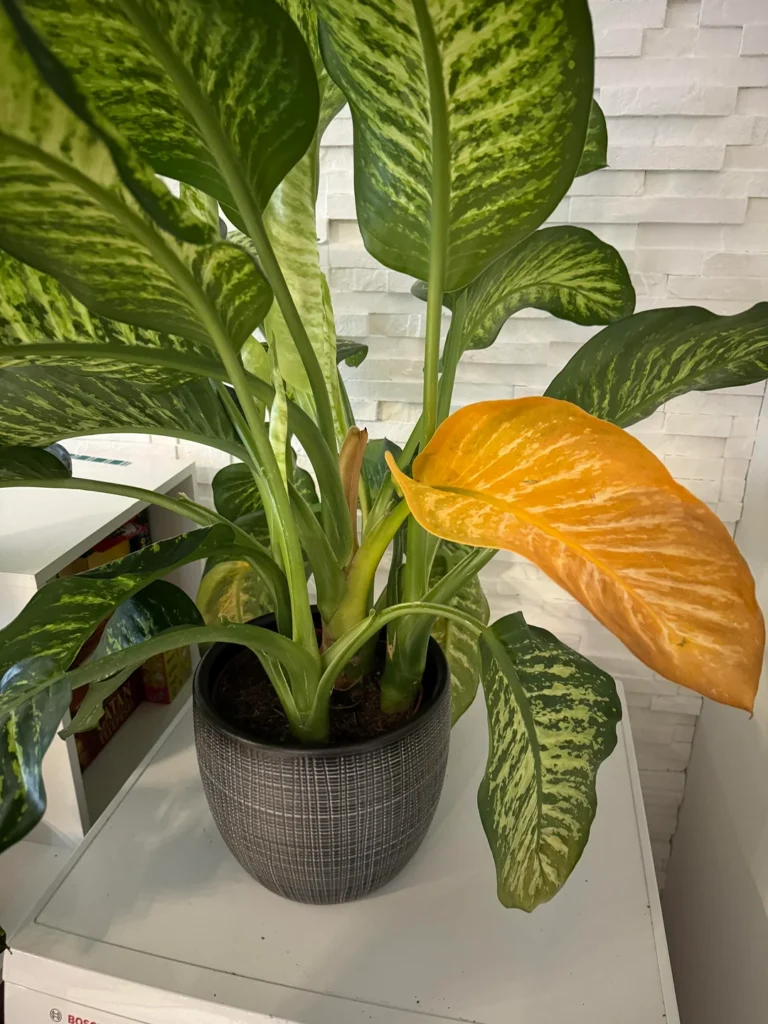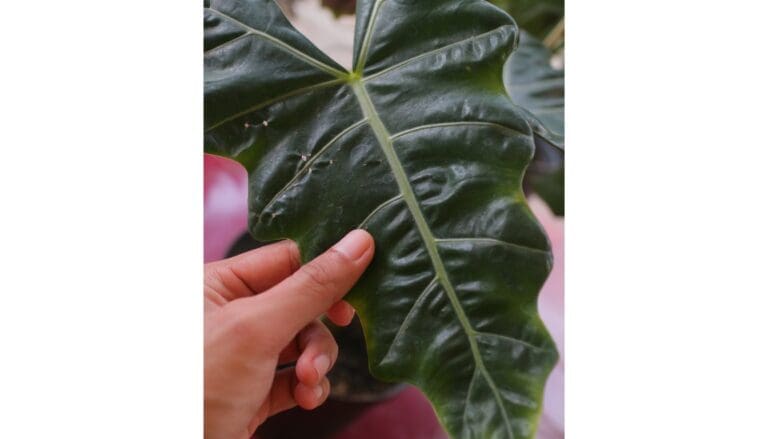Purple Shamrock Care Guide: With Easy Tips!
I’ve got a real soft spot for the purple shamrock, and if you’re reading this, you might too—or maybe you’re about to!
Known to the botanists as Oxalis triangularis, this charming little plant is famous for its vivid purple leaves that fold up at night like little umbrellas.
Pretty cool, right?
Its butterfly-like leaves and the easy-care nature make it an ideal plant buddy for both seasoned gardeners and newbies who are just dipping their toes into the world of greenery.
Ever have one of those days where you just can’t be bothered with high-maintenance relationships? Well, guess what, the purple shamrock totally gets you.
It thrives in a sunny window and only asks for a drink when the top inch of soil feels dry.
It’s the kind of low-key pal we all need in our lives. And it’s not just easygoing; it’s a resilient survivor, bouncing back even if you neglect it for a bit. Who doesn’t love a comeback story? 🌱✨
Now, I’m curious—have you already welcomed a purple shamrock into your home, or are you considering it?
What are your best plant care tips or funniest plant mishaps? Drop your thoughts below, and let’s swap stories! 📝😄
Remember, green thumbs are made, not born, and we’re all in this together.
Share your experiences and let’s grow our plant parent community one purple leaf at a time!
Please note: Simplify Plants is reader-supported. As an Amazon Associate, I earn from qualifying purchases made by our readers with no extra cost added to you all! Some links in the post are affiliate links and I get a commission from purchases made through links in the post.
What Is a Purple Shamrock?
Ever stumbled upon a plant that’s a total showstopper with its deep purple leaves and thought, “Wow, what’s this beauty?”
That, my friend, is likely the ever-charming Purple Shamrock! Now, let’s dive into its botanical profile and standout characteristics. 🌿
Botanical Profile
Botanical Name: Oxalis triangularis
Common Names: Purple Shamrock, False Shamrock
Family: Oxalidaceae
Here’s the scoop on this botanical wonder: the Purple Shamrock is a perennial plant known for its distinctive triangular leaves.
Originating from Brazil, it’s gained fame in the plant world under the more alluring moniker of Oxalis triangularis. In my own garden, it feels like it adds a drop of magic amidst the sea of greens! ✨
Characteristics and Appearance
Leaf Shape: Triangular
Color: Deep purple to almost black
Flowering: Yes, with small, delicate flowers
So, what makes this beauty so darn cute?
The Purple Shamrock struts a set of three triangle-shaped leaves per stem, unfurling to show a rich purple hue that can sometimes seem outright black!
It’s like having a little bit of a nighttime sky right there in your living room.
During the day, the leaves open to catch the light, while at night, they fold up in a sleepy tuck-in that’s just too adorable for words. 😴
And surprise, surprise! This plant isn’t just about leaves; it periodically sprouts dainty white or pale pink flowers, adding a sprinkle of fairy dust to its looks.
Have you had the joy of seeing these blooms in your Purple Shamrocks? Let me know in the comments – I’m all ears! 🌸
Fundamentals of Purple Shamrock Care

Taking care of a Purple Shamrock plant is like nurturing a tiny piece of magic in your own home. Let me guide you through the essentials to keep these charming plants happy. 🌿✨
Light Requirements
My Purple Shamrock thrives on plenty of bright, indirect light.
Do you have an east-facing window? That’s a perfect spot for these beauties, where the morning light is gentle.
But watch out, direct hot sun can throw them into a sulk by fading their vibrant colors.
Watering Routine
Consistency is key!
I touch the top inch of the soil with my fingertips; if it feels dry, it’s time to water.
Typically, that’s once every week, but I check more often during the warmer months.
Always avoid soggy soil to keep those roots healthy and rot-free! 💧
Soil Preferences
Purple Shamrocks aren’t picky, but they love a well-draining soil mix.
I mix in some perlite or sand with regular potting soil to keep their feet dry.
Remember, they’re more about avoiding wet feet than caring about the soil’s brand.
Temperature and Humidity
Just like us, these plants prefer a comfy living space.
Aim for temperatures around 60-75°F (15-24°C) and regular home humidity.
But hey, keep them away from drafty windows or vents, will you? They’re not fans of the shivers!
Planting and Repotting

If you’re looking to add a burst of color with a purple shamrock, you’ve struck gold with this planting and repotting guide. ⭐
Remember, timing is key and choosing the right home for your leafy friend makes all the difference.
When to Plant
Spring is like the opening night for planting your purple shamrock bulbs.
It’s when the ground is saying goodbye to frost, and the warm sun makes its comeback. Think of it as nature’s green light! 🌱🚦
Choosing a Container
Selecting a pot isn’t just about style—it’s about your shamrock’s health too!
Make sure the pot you choose has drainage holes to avoid soggy soil tragedies. A terracotta or ceramic pot typically works wonders and adds a touch of class.
Are you thinking of a cute pot that matches your shamrock’s vibe yet?
Repotting Steps
Time for a little “house” upgrade? Here’s how to keep it stress-free for you and your plant:
- Water your shamrock a day before repotting to loosen up the soil.
- Gently remove the plant from its current container without doing a tug-of-war.
- Choose a new pot that’s slightly larger—think about one size up from your shamrock’s flashy shoes.
- Fill the new pot with a well-draining potting mix.
- Replant your shamrock at the same depth it was in the old pot, and give it a nice drink of water. 🌞💦
Repotting doesn’t have to be like defusing a bomb. Just be gentle and your purple shamrock will thank you by flourishing!
Got any repotting stories or tips of your own? Drop them in the comments—I’d love to swap tales from the soil!
And if you found this guide helpful, spread the love and share it with your fellow green thumbs. Let’s get planting! 🌿👩🌾👨🌾
Propagation Techniques

When it comes to giving your Purple Shamrock, or Oxalis triangularis, a buddy, there’s no need for a magic touch! 🪄
I’ll walk you through two hassle-free ways to multiply these charming plants.
Whether you’re a fan of the quick and reliable Division Method or the patient gardener who prefers Seed Propagation, I’ve got you covered.
Division Method
Have you ever noticed your Purple Shamrock is getting a bit too snug in its pot? That’s the perfect time to divide! 😊 Here’s what I do:
- Gently take out the plant: Be sure to do this during its active growth phase, usually in spring.
- Find the natural divisions: Look for the clumps where the plant has naturally separated.
- Separate the bulbs: Using your hands or a clean knife, divide the clumps into smaller sections.
- Pot them up: Grab some fresh potting mix and plant each new section in its own pot.
Simple, right? Just a quick snip-snip here and some potting there, and voilà! New plants for your collection or to share with friends.
Seed Propagation
Feeling adventurous? 🌱
Seed propagation is like throwing a garden party and waiting to see who shows up.
- Sow the seeds: Get a tray and fill it with a good seed starting mix.
- Keep them moist: Sprinkle the seeds on top and gently mist them with water. Patience is key!
- Provide warmth and light: Place them somewhere warm, and bright, and wait for the magic to happen.
Remember, this method is a test of patience—it can take weeks, but imagine the thrill when you spot those first few sprouts!
So, fellow green thumbs, which method are you eager to try first? Are you a division devotee or a seed sower at heart? Drop a comment and let’s chat about it!
Don’t forget to hit that share button if you found these tips as refreshing as a morning dew! 💧
Maintenance and Pruning

Let’s talk about keeping your purple shamrock looking sharp! Pruning and maintenance aren’t just busy work; they’re your ticket to a lush, happy plant.
Pruning Tips
When it comes to pruning your purple shamrock, I keep it simple.
Snip off any yellow or dead leaves at the base to keep your plant healthy and encourage new growth.
Always use a clean, sharp pair of scissors or pruning shears.
Remember, a little haircut now and then keeps your shamrock perky! 🌿✂️
Here’s a quick step-by-step:
- Look for faded leaves showing signs of aging.
- Snip them off at the stem base, careful not to damage nearby leaves.
- Discard the cuttings to prevent rot and pests.
Seasonal Care
Every season brings a new vibe, and your purple shamrock feels it too! 🌷🍂
In spring and summer, keep the soil consistently moist but not waterlogged.
Come fall and winter, it’s time to reduce watering as the plant enters dormancy.
Keep an eye on your buddy; if it starts to droop, it might be telling you it’s thirsty!
Pests and Diseases

Keeping our Purple Shamrock (Oxalis triangularis) buddies healthy means keeping an eye out for the sneaky critters and those pesky plant sniffles they might catch.
Let’s dive in to ensure these beauties keep spreading joy with their purple leaves! 🌱💜
Common Pests
I’ll just say it: Pests love Purple Shamrocks as much as we do! But don’t worry, it’s a common love triangle we can navigate. Here’s who might crash the party:
- Spider Mites: Tiny spider-like pests causing yellow or bronze leaves. I imagine them with little burglar masks, stealthily sucking the sap. 😈🕷️
- Aphids: Ah, the clingy exes of the plant world! They hang on the undersides of leaves and are super clingy.
- Whiteflies: They’re like those uninvited guests that fly away when you come close but come right back the moment you turn away.
Got a surprise visit from these guys? A gentle soap and water spray or neem oil treatment often shows them the door!
Disease Prevention
Preventing diseases is like avoiding that person with a cold at the office. Remember, prevention is all about the environment you create. Here are some tips:
- Overwatering: It’s a no-no. Let the soil dry out between watering to prevent root rot. Imagine your plant’s roots gasping for air if too wet. 😰💧
- Good Circulation: Just like a little dance for your plants! Ensure good airflow to keep those funky fungi at bay.
Troubleshooting Common Issues

When your Purple Shamrock is looking a bit under the weather, remember, I’ve been there too—and I’ve got the tips to get those leaves perky and vibrant again!
Yellowing Leaves
Have you ever noticed your shamrock’s leaves turning the color of a banana? Yep, that’s a classic case of the yellows! But don’t worry, I’ll help you turn that frown upside down. Here are a couple of things to check:
- Nitrogen levels: If the soil is running on empty when it comes to nitrogen, those leaves might show it. Give them a little nutrient boost!
- Soil pH and Iron: Not too acidic or too alkaline; your shamrocks are Goldilocks and they want it just right. Plus, make sure they’re not iron-starved. Consider a soil test if you’re unsure.
Wilting Plant
Uh-oh, spaghetti-o! A wilting Shamrock is a sad sight. Let’s perk it up:
- Overwatering: It’s like leaving your feet in a bathtub for too long—nobody likes that! So, cut down on the water and let your plant’s roots breathe.
- Root Health: Peek-a-boo! What’s going on down there? Make sure your shamrock isn’t playing hide and seek with root rot.
Purple Shamrock in Landscaping
Let’s dive into how the stunning Purple Shamrock can make your garden the talk of the town! Imagine your neighbors peeking over the fence, green with envy. 😉
Garden Design Ideas
Have you ever seen a garden that just pops? Well, incorporating Purple Shamrocks can do just that! These plants are fabulous for adding a splash of color to borders or as a ground cover. I love using them in rock gardens too, because their purple leaves contrast beautifully against the stone.
Got a shady spot? No worries! These little beauties thrive in partial shade. Make ’em the star of your shaded garden nook, or let them play a supporting role in your floral ensemble.
Companion Planting
Now, who are the best buddies for your Purple Shamrocks? Think bright yellows and oranges to complement that deep purple hue. Marigolds and daylilies? Perfect pair! 🌼
But you know what’s awesome? These charmers aren’t just pretty faces; their robust nature means they’re easy to partner up without overwhelming their pals. I’m all about low maintenance, aren’t you?
Frequently Asked Questions
Q: What kind of soil is best for my Purple Shamrock?
A: I always go for well-draining soil! This prevents the roots from rotting, which they tend to do if the soil stays wet. A mix with perlite or sand can help with drainage! 🌱
Q: How often should I water my Oxalis triangularis?
A: This is the juicy part! Water every 1-2 weeks, letting the soil dry out halfway down between waterings. Remember, more sunlight might mean more thirst, and less light means less water. 💧
Q: Where should I place my plant?
A: Bright window alert! 🌞 Your Purple Shamrock loves light, but intense direct sun might be a bit too much. Perfect balance is key; think bright but indirect light to keep it happy!
Q: Does it go dormant? A: Absolutely—it likes a little nap now and then. In winter, don’t be surprised if it seems to take a break and shed its leaves. It’s not goodbye, just a see-you-later!
Q: Any tips on overwintering?
A: Keep it cozy indoors or in a protected spot. If you’ve potted your plant, raising the planter off the ground helps prevent cold damage.
Conclusion

Caring for a Purple Shamrock plant is a delightful experience, perfect for both green thumbs and newcomers to the plant world.
Remember, the key to a happy plant is ensuring it gets enough light, but not too direct, lest you want a crispy critter! 😅
I like to give mine a nice spot where the sun is generous but not overly so.
When it comes to watering, think of Goldilocks – not too much, not too little, just right! ✨
I stick my finger in the soil, and when it feels dry, it’s time for a drink. Simple, right?
And don’t forget that your Purple Shamrock appreciates good drainage, so make sure those roots aren’t sitting in water. Nobody likes wet feet for too long, right?
During dormancy, which especially for the plant newbies, means “nap time,” I let my Shamrock rest.
It’s like their little spa period, and who doesn’t love that? 😌
As for sharing the Shamrock love, they’re easy to split and share with friends. I mean, spreading a bit of luck never hurt anyone! 🍀
Now, I’m really keen to hear about your Purple Shamrock stories! How do you keep yours thriving? Got any tricks up your sleeve? Share your thoughts below, and let’s keep the conversation (and the love for these charming plants) growing!
Don’t forget to give your plant pals a gentle prune here and there, and you’ll have a bushy, vibrant buddy that brings a pop of color and a dash of luck to your home.
Happy planting, everyone! 🌿💜
Note: Some images in the articles are sourced from Reddit and Other Platforms For Reference Purpose.








Fertilizer what kind and how often
Purple Shamrock (Oxalis) does well with a balanced, water‑soluble houseplant fertilizer (something like 10‑10‑10 or 20‑20‑20). Use it at half strength about once a month during the active growing season (spring through early fall). No need to fertilize when the plant goes dormant.